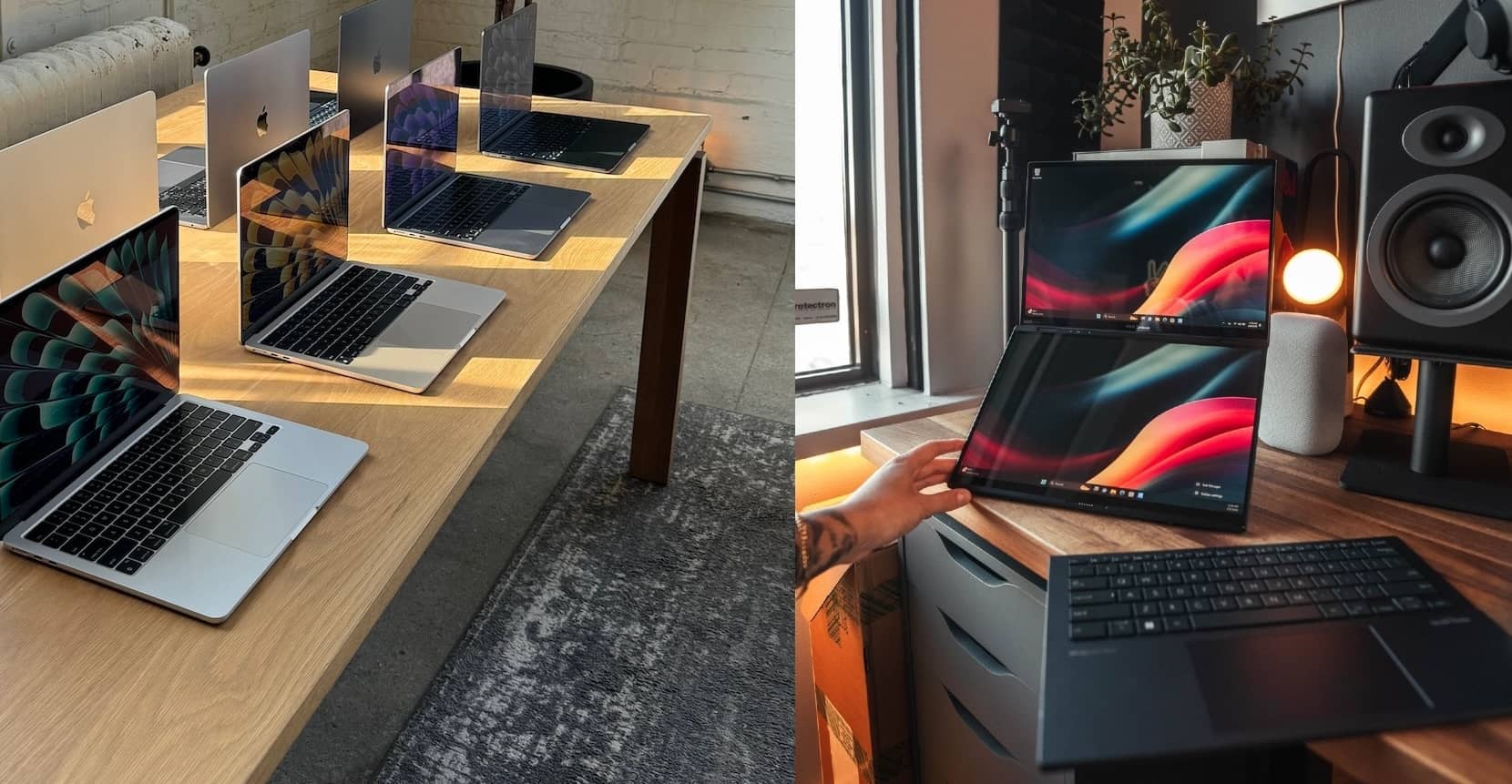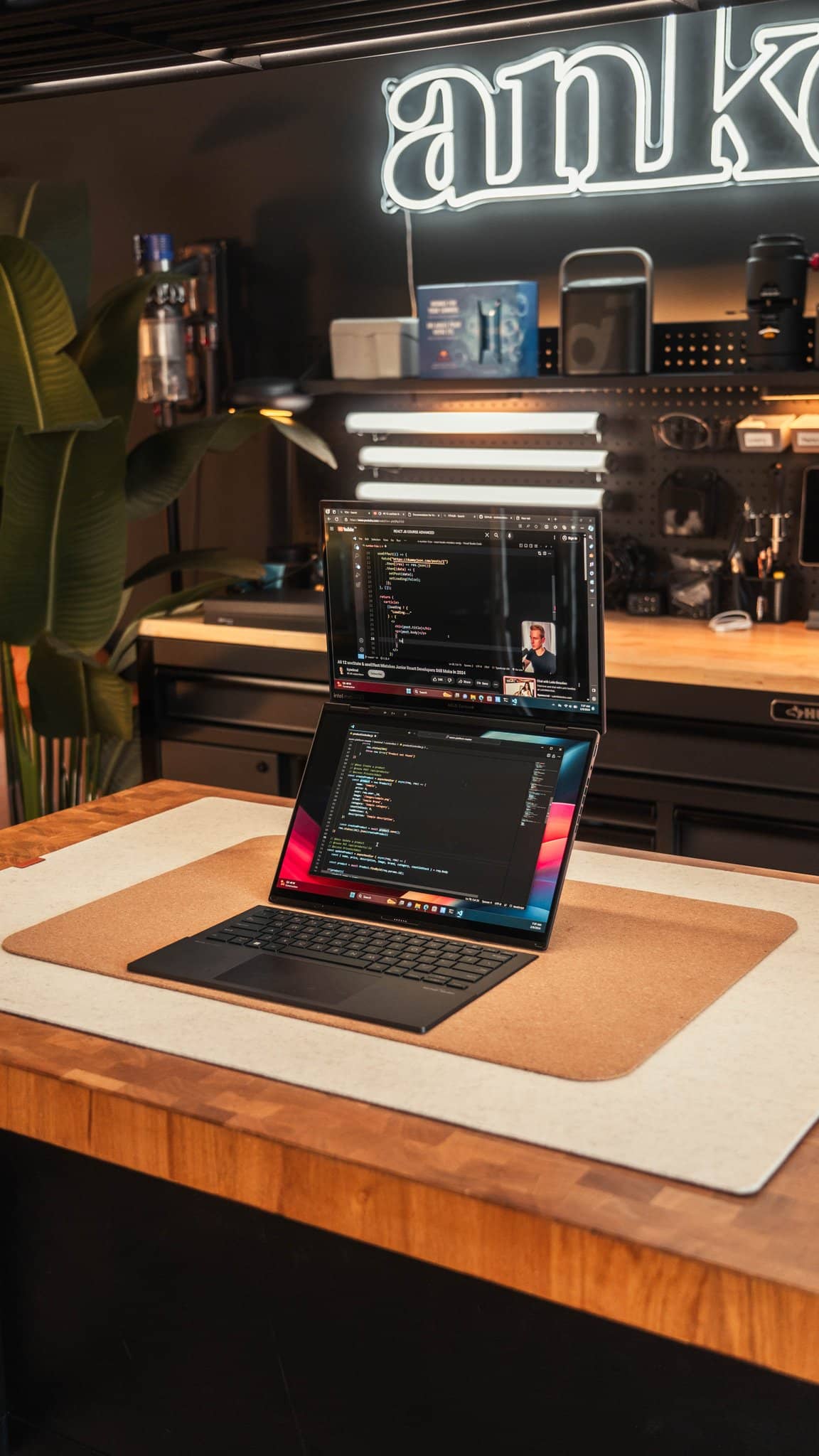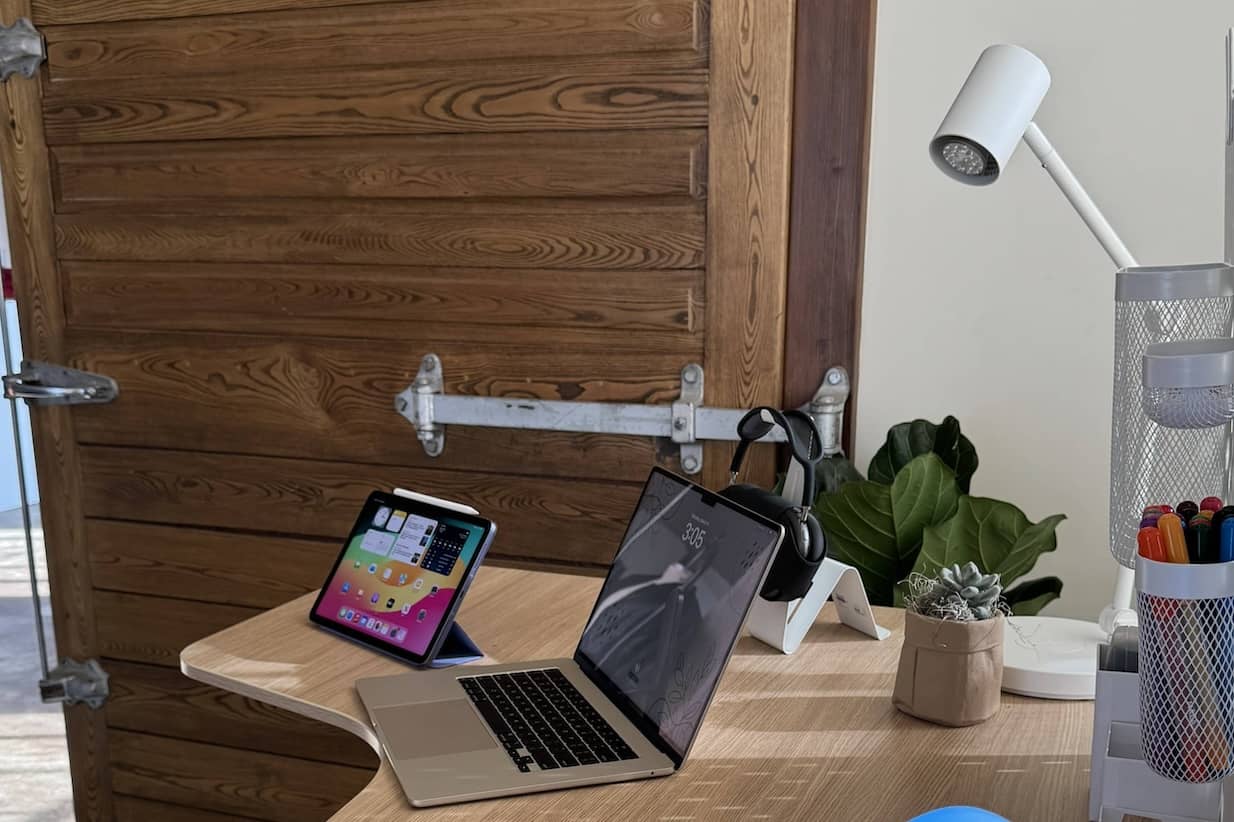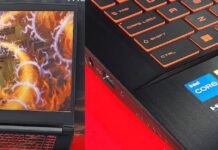
If you are looking to buy a laptop for the first time, you might be tempted to go to a computer store and ask the staff to recommend one for you. While it is beneficial to see the product firsthand, buying a laptop based on a recommendation from someone unknown is generally a bad idea for a lot of reasons.
First and foremost, you are forced to make quick decisions among the available laptops for sale. Some people are unable to say no when gently persuaded to make a purchase. Meanwhile, you are not aware of the state of the laptop market. Sometimes the price may increase significantly, and you end up wasting your hard-earned money by getting a device with lower specifications than you expected to use for.
Second, stores always avoid long inventory turnover and prefer that you buy the least wanted units first before introducing the good ones. Typically, these units don’t have very good specifications and provide poor value for the money you have to spend on them. This means you could be paying more money for a laptop with lower specs or outdated features.
Lastly, choosing the laptop that meets your expectations really depends on your needs as the user. If you are buying it for yourself, you should know how you want to use it. If you are buying it as a gift for your family, you should also consider their needs. Understanding your needs and budget is one of the most important aspects of buying a laptop. This is not something you can make up your mind in the middle of a conversation with a store salesman, especially if this is your first time buying it.
Basically, buying laptop blindly, without knowing your exact needs and budget, leads you to these following situations:
- Under-spec laptop. You finally bought a laptop that doesn’t perform well on tasks you need the most.
- Over-spec laptop. You spend more money than you need on the features you don’t use, even in the future.
- Receiving a defective unit. Some laptop models have issues in their QC and their manufacturing quality. This means, they might experience intermittent failure despite having a careful use.
- Overpaying for little value. You are paying a great amount of money for a device with fewer features and benefits than other laptops in the same price range.
We will walk you through the basic to advanced tips to get the best laptop for your needs within your budget, saving you from disappointment and even embarrassment from getting trapped by the marketing tricks.
Standingdesktopper's pick
The Basic Knowledge
When you want to buy a laptop that brings you good value for your money, you should first understand the components that are installed in a laptop. This information can save you hundreds of dollars by allowing you to fine-tune each component to your specific needs. Below are the most important laptop components to know for everyone.
- Processor
A processor is the brain of a laptop, and it typically determines the target market for specific laptops. The processor can also indicate how much power it has. Higher-end processors have more processing power and can deliver higher performance.
There are two major processor manufacturers for laptops around, AMD and Intel. Different series from each have different performances. That means you should be aware of the specific series when looking for a laptop. Later, we will explain the differences between each series so that you can choose the best one that fits your needs and budget.
- Graphic Cards
The terms graphics card, VGA, and GPU all refer to the same thing. Unlike the processor, graphic cards exist to perform specific graphics-related tasks such as displaying images on the monitor, rendering 3D objects in games, and exporting videos. There are also two biggest manufacturers of graphics cards, AMD and Nvidia. In general, Nvidia is superior for productivity tasks such as video production, animation, and 3D modeling. Meanwhile, AMD provides better performance for value, which is useful for gaming.
There are two types of graphics cards available. The first is an integrated card, while the second is a dedicated graphics card. The integrated card is the one that is integrated with the CPU. In most cases, it is less powerful than the dedicated one, but it is increasingly useful lately. It can speed up video decoding while lowering the bandwidth and cost of video streaming. Dedicated graphics cards, on the other hand, are more powerful, but also more expensive. They are extremely useful for high-demanding tasks like editing, gaming, and rendering.
- RAM and VRAM
This one is the component that stores temporary data required by the processing unit (CPU or GPU). RAM is critical because it allows the processing unit to access data quickly, making progress faster and more efficient. Higher capacity RAM is always a good deal, but the processor sets the limit.
You should be aware of the two types of RAMs available for laptops. The first is LPDDR RAM, the other one is DDR RAM. The LP represents low power, and this type of RAM is soldered onto the motherboard. Laptops with LPDDR can’t be upgraded, while laptops with regular DDR RAM slots can.
Just like processors and graphic cards, RAM also has different series or generations. Newer generation RAM is often faster and more efficient, but it also costs you more in terms of the price.
- Desktop or Laptop
Before going further, you must first decide whether you need a laptop or not. Nowadays, AIO computers, Mini PCs, and Desktop PCs are all competing with laptops for the best choice for the customer. However, they have significant differences from laptops in a way, as they are all desktop computers. Even a portable mini-PC suits better on the desk.
If you have understood the differences among all of them and you still think that laptop fits your needs the most, and if you answer “Yes” to all the questions below, then you can proceed to select the laptop.
- Do you need to have access to your computer at any place?
Laptops come with a battery, which allows you to take it anywhere you want. The processing power is also generally higher than a tablet, making it suitable for demanding tasks while moving from one location to another. Having a large screen, such as a 14-inch screen, is also a proper advantage for productivity while maintaining convenience.
- Will you sacrifice performance while paying more?
Desktop PCs are always more powerful than laptops in the same price range. The reason is that it takes more engineering research to fit everything into a small space, such as soldering super small components and miniaturizing them. As a result, you will have to spend significantly more money just to get the same performance with a desktop PC.
- Do you need a backup for your PC?
If you already have a powerful desktop computer and want more flexibility, getting a laptop can be a great option. This could be a good addition because some people might need to save their work to a different device and access it whenever they are not home or where the PC is. This way, you don’t have to go back and forth to access data and do the job whenever you need it.
- Do you plan on using it for productivity?
Productivity here refers to office work, web browsing, and media consumption. If you intend to use the laptop for those activities, buying one is a wise choice. You can actually add more activities, such as simple content creation, to your laptop with decent specs. However, if you only plan to play games, you better stick with a desktop computer unless you are planning to do it while you are outside.
Dive into the Components
If you have made it this far, you sure have decided that a laptop is an absolute must-have. Now, let’s get into an important aspect of your quest in searching for the best laptop. Basically, we will learn how to find the best components for a laptop, such as processors, graphics cards, RAM, SSD, displays, and many other things, all in order based on the most important part to the least.
- Processor
When shopping for a laptop, specifically one running on Windows operating system, you will be presented with Intel and Ryzen processor options. Intel is definitely Intel, while Ryzen is a model from AMD. Let’s learn how to read their codenaming method so that you can quickly identify a laptop with a good processor. Understanding this also allows you to determine whether the laptop with the specified processor is appropriate for your needs and within your budget.
Intel, in fact, has two distinct naming schemes, the old and new one. The new one was introduced in 2023. They now use a shorter naming scheme with only a three-digit system for the processor number. Meanwhile, the old is longer but more straightforward.
Intel Nomenclature
The Intel nomenclature is fairly simple. It consists of the brand, brand modifier, generation, SKU, Prefix and Suffix.
- Brand refers to the overall product line of intel processors such as Celeron, Pentium, and Intel Core. Intel core performance is better and more powerful than the other two.
- Brand modifier determines the series or the level of an intel processor. It has 4 series such as i3, i5, i7, and i9. The higher the brand modifier the more powerful it is. Some entry laptops also have unique modifiers such as Silver or Gold, which is applicable for Intel Pentium brands.
- Generation indicates the order number it is released. That means, the newer generation has the highest number. Newer generations usually give better performance and efficiency at the same time while having additional features. Intel processor generation is typically updated once a year, and you can already order an Intel Gen 14th in late 2023.
- SKU is useful for distinguishing its features such as integrated graphic card availability and its level.
- Prefix and Suffix are unique codes that have important meaning. It is covered in this page. However, you only need to know the following as they are the most frequently used.
H, HX, HK: High performance. The processor is recommended for gaming, video editing, and even rendering. The X and K version is even better with extra features for adjusting the processor speed using a dedicated app.
P: Performance. It is optimized for thin laptops. This is just in the middle between the low-power and high-performance processor, and it gives decent performance.
U: Power efficient. A decent processor series for lower watt, allowing to get longer battery life.
Y: Extremely power efficient. The processor for light tasks such as web browsing, office work, and watching videos.
G1-G7: Integrated graphics. The higher the number, the better its performance. It allows you to get better performance both in games and editing apps.
AMD Nomenclature
Ryzen processor by AMD also has a simple numbering scheme. It is quite similar to Intel’s counterpart in which it deploys 3, 5, 7, and 9 as the level number combined with SKU and suffixes.
If you’re looking for a laptop, the easiest way to determine its capabilities is to look at the level, first number, and suffix.
Higher levels provide more performance, which is the first thing to consider when getting a laptop with a Ryzen processor. AMD has five common suffixes, including HX and HS for performance-oriented users, U for slim laptops with decent performance, C for Chromebooks, and E for ultra-low-wattage versions.
How can you compare laptop processors according to their rendering performance?
Now that you know the types of processors, let’s put it into practice. Here are the steps you can take to find out which laptop processor is best for your needs and budget.
- Search on Google with the following keyword “laptops reviewer Cinebench R23” or click this direct link to go to the laptopsreviewer.com. Don’t forget to add laptop in the keyword search because laptop and desktop processors are massively different.
- Choose Cinebench R23 Multi Core Benchmark Scores to find all the processors that have been tested. This data was gathered from people who tested the processor and uploaded them there. Pay attention to the blue and red bars. They identify processor brands. Intel is blue, and Ryzen is red.
- Here you can tell that Intel is dominating, making it a viable option for optimal performance.
Now, let’s put our nomenclature knowledge into practice. Let’s say you have a $1500 budget and look for the best performance laptop.
Obviously, you will go for a laptop with a 12th Gen Intel Core i9 12900HK processor because it offers the best performance. Now, let’s look in the marketplace to see if a laptop with that processor is within your budget.
- Choose your preferred marketplace (we will use Amazon for an example). Type the processor you want from the laptop reviewer, but don’t include the full name. Simply take the level, the following numbers, and the word ‘laptop’. In this case, it is an i9 12900HK laptop.
- Focus on the keyword. Don’t get distracted by sponsored posts that have nothing to do with the keyword you are looking for (in this case, i9 12900HK laptop). A quick look at the laptops reveals that they are priced at $3,015, or $2,299, which is clearly higher than your $1,500 budget. In this case, return to the third step above, lower your processor specifications to a level, and repeat until you find the right balance of budget and requirements. That is how you find the processor based on its rendering performance.
- Take notes of the laptops and go to the next step for finding the graphics card.
- Graphic Cards
We previously learned that there are two types of graphics cards. Integrated and dedicated graphics cards. The dedicated graphics card is separate from the CPU and is typically more powerful than integrated graphics cards, especially in laptops.
Two Giants
There are two major graphic card manufacturers, AMD and Nvidia. The terms RTX, GTX, MX, and Quadro all refer to Nvidia graphics cards. Meanwhile, RX stands for AMD cards.
Nvidia’s new lineup, RTX, comes with new features such as ray tracing and DLSS. Gamers prefer ray tracing because it produces more realistic images. How? This technique generates a 3D image by calculating the realistic trajectory of light as it strikes an object or surface. Since the calculation consumes a significant amount of power, the computer requires a powerful graphic card.
Another feature called DLSS, stands for Deep Learning Super Sampling, works hand-in-hand with ray tracing. Ray tracing can have a huge impact on gaming performance because it requires powerful calculations. The DLSS is AI-based processing that is available in RTX cards and can improve quality and maximum frame rates. It can also produce higher resolution frames from lower resolution inputs.
Based on the explanation above, the RTX cards from Nvidia may be designed for gamers. However, this is not true. If you need the laptop for content creation, you can safely choose Nvidia over AMD graphics. The reason for this is that using Cuda cores allows for multiple times faster rendering. With Tensor cores, rendering speed can be improved even further. This may surprise some because in the early days, processor cores were more important for video rendering. Nowadays, a better GPU significantly boosts the rendering speed.
On the other hand, AMD RX is not commonly found in laptops. With their 7000s and 7000m series, they can give a powerful performance with less price than the RTX laptops.
How to Compare Graphic Cards
For whatever graphic cards you want to compare, the higher the number, the better. It performs better when they come from the same family (prefix). For example, RTX 3080 performs better than RTX 3070. RTX 3070 is more powerful than the RTX 3060. The same goes for the RX 6800, which outperforms the 6700.
There is a website that collects benchmark data for graphics cards. This website is called laptopmedia.com, and it can tell you which one suits best for your needs. If you want a new laptop with good graphics cards, here’s how to use the list.
- Visit laptopmedia.com and go into the top laptop graphics ranking. Click this link to jump directly to the website.
- You will be presented with a list, and you can just roughly estimate which laptop you can buy. The website already tells you the estimate of each laptop with the graphic card of your choice.
- What you need to pay attention to is the ‘W’ prefix after a number. It represents wattage, which is the amount of power required to run the graphics card. Higher energy means less runtime, which reduces mobility. However, it also means that the card performs better than the one with lower wattage.
With this information, you can choose several options available. You can select the most powerful laptop regardless of its energy requirements. You can also find a VGA with the highest efficiency / performance per watt. Finally, you can choose the best performance based on its value.
Notable Consideration for Other Components
The processor and graphics card are the two most important components that determine how well your laptop performs. However, they won’t work properly unless they are supported by other components such as RAM, SSD, and display.
- RAM
Most laptops nowadays are installed with at least 4GB of RAM. However, with Windows 11, you should aim for at least 8GB, even for light productivity tasks like web browsing, watching movies, and typing documents. If you do task-intensive activities like video editing and gaming, 16GB of RAM is the ideal and recommended capacity to aim for.
Even though 16GB of RAM is sufficient, if you plan on using it for an extended period of time, you will undoubtedly need more RAM capacity. After a few years, applications will need more RAM to run properly. Having more RAM capacity is even more important for content creation, even though it is not particularly demanding in some games if you are expecting to use the laptop for it.
If you want to be future proof, consider buying a laptop with a DDR RAM slot rather than LPDDR RAM. The reason is obvious, as laptops with DDR RAM slots can easily be upgraded to the maximum amount specified by the processor.
If you want to upgrade the RAM in your laptop, you need to make sure that it is compatible in terms of form factor, generation, speed, and capacity. Otherwise, your laptop will not boot up or will have some problems such as BSOD (Blue Screen of Death). When upgrading RAM, make sure to buy from reputable brands. Avoid refurbished and unknown brands because they can degrade the performance and life of the laptop.
- SSD
When shopping for a laptop, you usually have options for storage capacity. Nowadays, 512 GB SSD is the bare minimum, as modern games and apps take up much more space. If you want to use the laptop for gaming or content creation, you should know a few things.
First, a modern SSD is connected to your computer via one of two interfaces or connectors, SATA or PCIe. SATA SSDs are less expensive, but they run slower. It is typically found in low-budget laptops, but it is still faster than traditional spinning hard disks. PCIe interface with NVMe SSD is the new standard because it is faster than SATA SSD, and you should aim for it if you plan to use your laptop for gaming or content creation.
Since NVMe SSD is now the new standard, there are some differences based on PCIE generation. PCIe 5 will be introduced in mid-2024, making NVMe SSDs even faster than they are now. With this information in mind, you should aim for at least a laptop with a 4th generation PCIe port in it to improve performance. Again, this information is useful for high-demanding activities like gaming and video editing.
Second, increased SSD capacity is always beneficial to data security and longevity. The SSD’s lifespan is limited by TBW (terabyte written). Basically, every time an SSD writes data, it wears down. When it reaches the manufacturer’s specified TBW, it will no longer function.
This is what makes many base-model MacBook Air m1 2020s die suddenly. The owners, pleased with its excellent performance, are unaware that the limited RAM forces the system to use its SSD as a RAM swap. While the performance remains smooth, it significantly increases the TBW, especially when the system needs to write a large amount of data into RAM and perform a RAM swap.
Windows laptops can also experience the same issue, which is why 16GB of RAM is recommended to begin with. However, the consequences of using an SSD as a RAM swap are not severe in a Windows laptop. Users can easily replace the broken SSD, allowing the laptop to work in a normal way after the replacement. That won’t work for a MacBook because the SSDs are soldered into the motherboard.
The TBW number provided by the manufacturer is not absolute. It is only an estimate. That means the SSD may die sooner or later, regardless of the TBW. TBW is dependent on capacity. The higher the capacity, the higher the TBW, which means it will last longer.
Another way to reduce the TBW so that it doesn’t fill up quickly is to use a DRAM cache within the NVMe. The cache stores frequently used data in a mini-RAM, so your laptop doesn’t have to write to and read from the SSD directly. Unfortunately, you can’t check this feature from your laptop’s specifications, but it is useful if you want to upgrade your NVMe SSD.
When looking for a laptop, you may want to have maximum mobility. This means not bringing an external dongle or hard drive. In this case, you should consider a laptop with an empty drive slot available. This allows you to insert the new hard drive, whether it is an SSD, NVMe, or an old hard disk, directly inside without having to bring an external drive wherever you go.
- Screen
The laptop screen should be treated as your home. It is what you will be looking at every time you use your laptop. Depending on your needs, you will need different types of screens. There are three types of screens commonly found in laptops. They are TN, IPS, and OLED. You should also be familiar with several key terms, including response time, color accuracy, color gamut, and refresh rate.
- Color Gamut
The color gamut is indicated by the terms NTSC, sRGB, and DCI-P3 on your laptop’s specifications. Basically, it is the wide range of colors that your panel can produce based on a specific standard, such as NTSC, sRGB, or DCI-P3. Practically, it refers to the number of color variations that can be displayed.
If you only use your computer for productivity, you don’t have to worry about the color gamut. However, if you are a digital content creator, you must have at least 100% sRGB color gamut. 100% sRGB means that your monitor can produce the entire color spectrum within this range, which is useful for displaying digital media such as smartphones and computers. If you are a gamer, you can benefit from 100% sRGB because the colors are more vibrant and provide a more enjoyable experience when playing games.
- Color Depth
Color depth determines the gradation or fineness of each color within a color gamut. For a laptop monitor, you should aim for at least 8-bit depth and 10 with/without FRC. This allows for a smooth transition in the image you are seeing.
Higher bitrates are extremely useful because they provide a smoother tonal range, reducing banding on your display.
- Color Accuracy
Color depth and bit depth don’t determine color accuracy. It is determined by the ΔE value. If it is less than or equal to 2, the monitor is considered accurate. In order to achieve this, manufacturers should provide special treatment through software tweaking. It usually costs money, which is why it is rare, particularly in low and mid-end laptops. If color accuracy is important to you as a content creator, editor, or gamer, you can calibrate the display after buying it.
- Response Time
This feature is important for reducing motion blur, which causes ghosting, blurring, and trailing effects in a fast-paced display, such as when playing a competitive game. A shorter response time is preferable to avoid all of these negative consequences.
- Refresh Rate
Just like the response time, refresh rate has an impact on ghosting and blurring. It is an unseparated element from the response time to create a clean image. A higher refresh rate, such as 144hz, is ideal for competitive games, and if you enjoy gaming, you should definitely consider this aspect.
However, for content creators and office workers, a 50hz or 60hz monitor will be just fine, though it is always better to have a high refresh rate monitor.
- Panel Type
TN
This type of panel has the lowest quality of the three. It has a low contrast ratio, lacks a wide color gamut, and is prone to ghosting. This panel can help you save money because it is the most affordable one.
IPS
This should be the standard monitor panel. It has an excellent viewing angle, allowing you to enjoy the display from any angle. The contrast won’t change when you tilt the monitor up or down. It is perfectly clear wherever it is opened. However, it is significantly more expensive than TN panel, which makes the laptop cost more.
OLED
If you want the best display for your laptop, choose OLED. It produces a true black display, allowing for a super high contrast ratio. Viewing and creating content can be much more enjoyable with an OLED screen.
While it is extremely good, it has a tendency to burn in, leaving a permanent static image. It is also much more expensive, which is why it is mostly only available on high-end laptops.
Three Common Scenarios
After you have learned everything about components in a laptop, it is time to put them to practice. When people buy a laptop, they typically fall into one of three scenarios. We will go through them one by one.
For Office/Business
- Processor
A laptop for productivity doesn’t need to be fast or powerful. It needs to become more efficient. Please, never use celeron or pentium in 2024. Instead, choose a new generation Intel Core i3 or Ryzen 3 series processor for even greater efficiency. Choose U, Y, G1, and G7 suffixes for this type of use.
You can also choose the N100 processor, which has four cores and four threads and is from a relatively new generation (Alder Lake). This processor is typically available in the form of a mini-PC, but it can also be found in laptops.
- Graphic Cards
Integrated graphic card is enough for this use, dedicated graphics card will just bottleneck the whole thing.
- RAM
4GB for Windows 10 and 8GB for Windows 11.
- SSD
256 GB is enough but prefer to go for 512 GB for more convenience and extra TBW.
- Screen
Although TN panels should be just fine, IPS panels are in high demand. The extra money spent on the screen is still worth it.
For Gaming
- Processor
The Intel Core i5 or Ryzen 5 series are good enough for light gaming. However, if you prefer a more serious gaming experience, get the one with level 7 or 9. Consider H series laptop CPU for optimal performance, or P for light gaming. Because of the heavy use, the CPU and GPU will quickly drain your battery.
- Graphic Cards
It is the most significant aspect of all. Prioritize the GPU first before you go for the processor. Choose one with a high score in the benchmarks listed in the previous links.
- RAM
16GB minimum, no question asked. If you can upgrade it, go for it. Always run in dual channel mode for much better performance.
- SSD
512 GB is the bare minimum. Consider upgrading it or extending the available slot to store more game data.
- Screen
If you only play single-player or slow-paced games, you won’t need to worry about laptop screens. A 100% sRGB display with a 60Hz refresh rate is just enough for you. However, if you want to gain an advantage in competitive games, consider increasing your screen refresh rate to 144hz or even 240hz.
For Content Creation/Rendering
- Processor
The CPU is critical, so consider the Intel Core i5 or Ryzen 5 series to get started. If you can afford it, choose a level 7 or even 9 processor for the best results. Consider the H suffix for optimal performance. However, due to the short life of the battery, you may need to connect your charger adapter most of the time.
- Graphic Cards
In contrast to the past, graphics cards are now extremely useful for rendering. Nvidia Cuda cores can significantly reduce rendering time. AMD cards can also be used, despite being prone to bugs and instability, making them unreliable for this task. However, laptops with AMD graphics cards are generally less expensive.
- RAM
You can start with 8GB for a light-weight workflow. However, you will need more as your programs demand it. You can max out the RAM for the best result. Please check the processor limit before upgrading.
- SSD
You definitely need a high-capacity SSD such as 1TB or more. It will be used for saving your media files, cache, and rendered results. Additionally, it will also prolong its lifetime, preventing you from losing important files in the future.
- Screen
Depending on your needs, you should work on a display that supports the required color gamut. If you need to create digital content, you are good with 100% sRGB. However, if you intend to make short films, your laptop should have a wider DCI-P3 color gamut. Color accuracy is also more important if you are an editor, putting it on higher priority above RAM and SSD.
Bonus – High Efficiency Productivity
MacBooks with M1, M2, and M3 processors are incredibly efficient. With ARM-based processors, it can deliver extremely high performance while consuming less power and not requiring a connection to the power source. It can literally last a whole day under a heavy workload. MacBook is ideal for productivity and content creation jobs due to its fast engine. The retina display is excellent, allowing for precise output to various media. However, though the MacBook is a dream laptop, it has several limitations. It doesn’t perform well when gaming or rendering in Blender.
Our recommendations
After learning about some important factors to consider when buying a laptop, you can start browsing and determining which model is best for you. In addition to relying on hard data, you should research the model you want to buy on social media forums. Simply search for your preferred model name and you will see what problems usually happen to those who bought it.
Typically, a laptop that turns into a meme, such as the MSI due to its weak hinges, spreads like wildfire, and you should keep this in mind when shopping for a laptop. Also, make sure to seek second opinions in groups or forums, as some laptops can be hidden gems waiting to be discovered.















